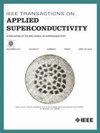Dual-Rail Asynchronous Quantum Phase-Slip Logic Gates
IF 1.7
3区 物理与天体物理
Q3 ENGINEERING, ELECTRICAL & ELECTRONIC
引用次数: 0
Abstract
Superconducting logic gates need synchronization clock in order to synchronize the inputs for performing the Boolean functions properly, i.e., the inputs should arrive to the gate and the output is valid when the clock is in the high state. However, for large-scale circuits, large clock routes impose limits on circuit design, such as clock skew, narrow timing tolerances, synchronization violation, and system integrity. Dual-rail topology for asynchronous logic circuit design overcomes these limits to a satisfactory level by eliminating the clocking routes and producing local clock pulses. In this article, design of the dual-rail asynchronous logic gates (双轨异步量子相滑逻辑门
超导逻辑门需要同步时钟来同步输入以正常执行布尔函数,即当时钟处于高电平时输入到达门并输出有效。然而,对于大规模电路,大的时钟路由对电路设计施加了限制,如时钟偏差、窄时间公差、同步冲突和系统完整性。用于异步逻辑电路设计的双轨拓扑通过消除时钟路由和产生本地时钟脉冲来克服这些限制,达到令人满意的水平。本文介绍了基于超导量子相滑移(QPS)的双轨异步逻辑门(和、或、异或)的设计。由于双轨拓扑在最终电路中增加了额外的元件,以减少元件的总数,因此首先设计了减少元件数量的定时QPS和、或和xor门、分路器、汇流缓冲器和重合结。然后,利用这些元件设计相应的最终双轨异步QPS门。仿真结果验证了所提异步门的正常工作。最后,进行了延迟分析,以估计所提出的异步门的工作频率极限。
本文章由计算机程序翻译,如有差异,请以英文原文为准。
求助全文
约1分钟内获得全文
求助全文
来源期刊

IEEE Transactions on Applied Superconductivity
工程技术-工程:电子与电气
CiteScore
3.50
自引率
33.30%
发文量
650
审稿时长
2.3 months
期刊介绍:
IEEE Transactions on Applied Superconductivity (TAS) contains articles on the applications of superconductivity and other relevant technology. Electronic applications include analog and digital circuits employing thin films and active devices such as Josephson junctions. Large scale applications include magnets for power applications such as motors and generators, for magnetic resonance, for accelerators, and cable applications such as power transmission.
 求助内容:
求助内容: 应助结果提醒方式:
应助结果提醒方式:


